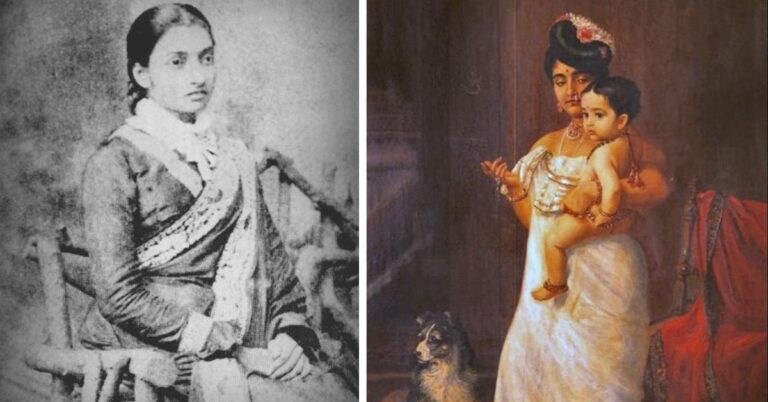![]()
In ancient India, women often wore saris without an upper undergarment, adapting to the climate and cultural norms of the time. However, during the British Raj, a significant shift occurred thanks to a pioneering woman named Jnanadanandini Devi. Born into the Tagore family, Debi played a crucial role in creating the modern sari blouse, forever changing Indian fashion.
Historically, Indian women’s attire did not include a sari blouse. Ancient sculptures and temple art depict women with the upper part of their torso bare. This practice was common and practical, especially in the hot climate. However, fashion began to evolve significantly during the Mughal era in the 15th century, setting the stage for traditional attire as we know it today.
The sari, in a form closer to its modern incarnation, appeared during the Indus Valley Civilization (2800 BC to 1800 BC). Women’s attire included the Uttariya (a lower garment), Stanapatta (a chest band), and Antriya (a piece of fabric over the shoulder). While the chest band was part of the attire, it was often discarded in hot weather.
The transformation began with Jnanadanandini Devi, married into the Tagore family and an advocate for women’s rights. Despite the restrictive purdah system confining women to their homes, Debi challenged these norms. Encouraged by her supportive husband, Satyendranath Tagore, she began to break free from traditional constraints.
An incident in Bombay catalyzed this change. Denied entry to a British club due to her traditional Bengali attire, Debi devised a solution. She adopted the Gujarati style of draping the sari, bringing the pallu around her body and throwing it over her left shoulder. This style not only covered her upper torso but also added elegance to the sari.
Debi’s innovative draping style quickly gained popularity. Upon her return to Calcutta, she taught this new style to local women, leading to the widespread adoption of the Brahmika sari. This style eventually evolved into the chemise, jackets, and blouses that are now integral to the sari.
Jnanadanandini Devi’s influence on Indian fashion is profound. Her introduction of the sari blouse has become a fundamental aspect of Indian attire, offering endless possibilities for design and personalization. From sweetheart necklines to halter necks, the sari blouse is now a symbol of both tradition and modernity in Indian fashion.
As the tailor at the curb continues to suggest different blouse patterns, each more intricate than the last, it’s clear that Jnanadanandini Devi’s legacy lives on. The sari blouse, once non-existent, now holds a celebrated place in the world of Indian fashion.
Reference:







